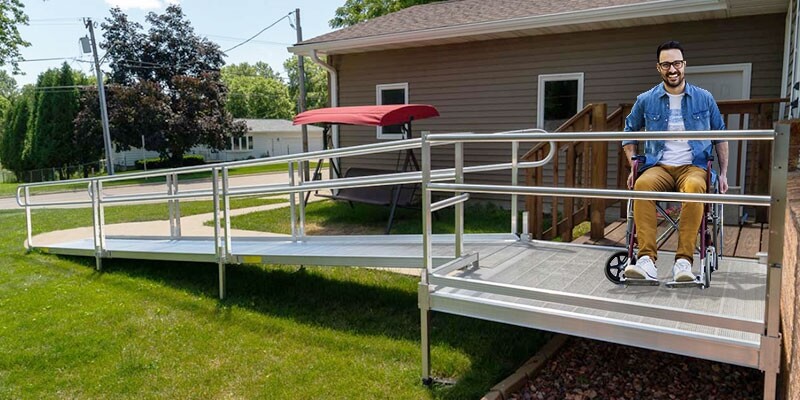6 Types of Wheelchair Ramps and How to Use Them

Getting into places with steps or raised entrances can be tough for people using wheelchairs or scooters. Even though there are rules to make places accessible, some spots are still hard to reach for wheelchairs.
But there’s good news! There are different wheelchair ramps that can help. These ramps are portable, so they can be used in places without ramps already set up.
Permanent Ramp
The most common wheelchair ramp is the permanent one. Usually made of strong stuff like concrete or wood, this ramp can’t be moved once it’s built. It’s fixed in place, not something you can adjust or relocate. Setting up a permanent ramp often needs a building permit because it’s built right into the site.
While not as flexible as the other ramps we’ve talked about, permanent ramps do have their perks. They’re usually tougher than portable ramps and able to handle rough weather and lots of people using them.
Threshold Ramp
Threshold ramps are meant to assist wheelchair users in crossing the small barrier at the bottom of a doorway. They’re typically made of rubber or metal and come in different sizes, usually just a couple of millimeters high. Placed right against the edge of the doorway, these ramps provide a smooth way for people with mobility challenges to enter rooms and buildings more easily and safely.
They’re small and simple, making it easy to install them on various doorways with thresholds.
Folding Ramp
There’s a handy option for wheelchair users called a folding ramp. It’s made up of several panels joined by hinges, which means it can fold up when it’s not needed. You can use it for small steps, uneven surfaces, or even to help get into vehicles.
In certain countries, commercial spots or public areas need ramps with handrails by law. Because folding ramps don’t have this feature, it’s best to use them at home or for personal purposes.
Suitcase Ramp
Similarly, suitcase ramps can be folded up for simple carrying and storage. They come with a handle for easy portability. At about a meter long, they’re handy for small steps. Despite their size, these ramps are strong, holding over 300 kilograms.
However, like folding ramps, suitcase ramps lack the safety features needed by the disability discrimination laws. That means they can’t serve as the main ramp in public spots like shops, offices, parks, or other commercial areas.
Telescoping Ramp
The telescoping ramp is another portable option, helping wheelchair users access different spots. It’s made of two channels that slide into each other for easy storage. Each channel is a few centimeters wide and has bumpers to keep wheelchairs or scooters secure.
These ramps are handy for getting over small steps or uneven areas. They also assist people with limited mobility to get into non-wheelchair-accessible vehicles. Because they’re narrow and compact, you can easily stash them in a car’s trunk or under the seats.
Modular Ramp
A modular ramp is like a mix between a portable and a permanent one. It’s sizeable, so it feels more fixed, yet it’s not built into the area, avoiding the need for a building permit.
Usually made of aluminum, these ramps come in sections that can be taken apart and moved elsewhere. They often include safety features like curb rails and handrails, meeting the requirements for use in commercial spaces.







